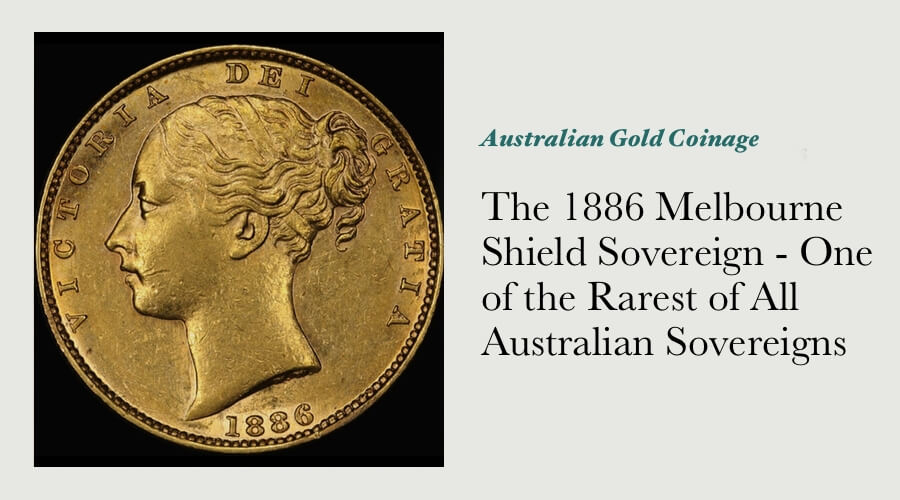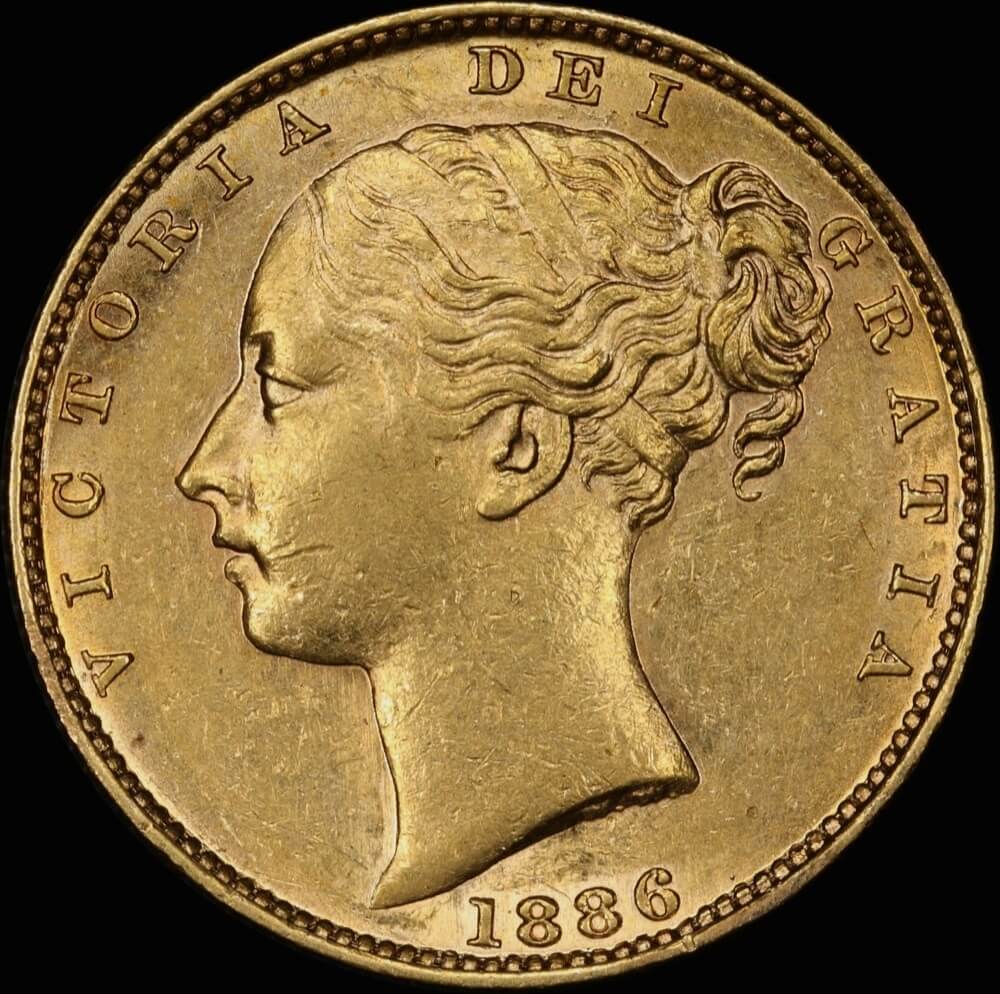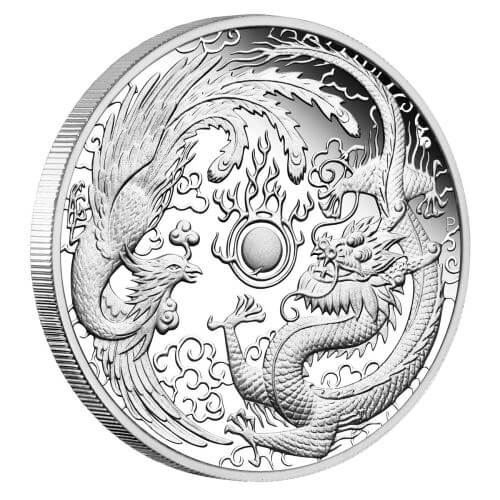The 1886 Melbourne Shield Sovereign - One of the Rarest of All Australian Sovereigns

Sovereign collectors the world over have long known that Queen Victoria sovereigns with the Shield reverse are far scarcer than Young Head St George sovereigns of the same date.
The 1886 Melbourne is not only the rarest date in the entire "Shield" series but dedicated collectors of Australian gold coins who were active back in the 1970s will also readily tell you that the 1886 Melbourne Shield is one of Australia's rarest sovereigns of any type.
Missing From The Gilbert Heyde Collection
Gilbert Heyde was one of Australia's foremost numismatists and collectors between the Second World War and the 1970s. Heyde bought two major collections "en bloc"; had an extensive network of contacts across the Australian numismatic community, and had very close contacts with each rare coin dealer in Sydney. His collection contained such rarities as:
-
A Type I Adelaide Pound;
-
38 * 1930 pennies;
-
A 1937 pattern penny and florin;
-
Several Holey Dollars;
-
Several Mason and Culley penny tokens;
-
Several Kookaburra pattern pennies and halfpennies;
-
As well as many, many more rare and desirable coins from Australia and across the world.
The 1886 Melbourne Shield sovereign was one of the few truly rare coins missing from the Heyde collection.

Struck for Export to India
Interestingly, the vast majority of, if not all shield sovereigns struck in Australia were exported to India. The background of this nuance of distribution provides an insight into world trade in the 19th century.
The British East India Company was actively involved in the China-India trade during this period, some of the products traded included: British cotton; Indian textiles; opium; spices and tea; silk and porcelain.
One train of thought is that Chinese merchants were most reluctant to accept payment in gold sovereigns featuring the St George reverse design, as it depicted a dragon in an undignified and indeed humiliating position.

The Image of The Dragon in Chinese Mythology
In European mythology (such as fairy tales) dragons are generally reviled and hated creatures - slain by the hero of any story they feature in. In stark contrast, the dragon is one of the most important images in Chinese mythology and is used to symbolise happiness, immortality, procreation, fertility and activity.
Images of dragons appear widely in Chinese architecture, clothing; in decorative arts and in annual festivities. It is hardly surprising then that Chinese merchants may have refused to accept coins featuring an image of a dragon being slain.
An alternative explanation is that the use of an image of St George (the patron saint of England) on British coinage nigh constituted idol worship, a practice that is taboo in many Eastern religions.
.jpg)
Yet another (less sensational) explanation for the use of this reverse type in India is that “the people there had become accustomed to that pattern.” Whatever the explanation, “the Master of the Sydney Mint had instructions from the Royal Mint to use the St. George type reverse, and to only strike sovereigns with the shield reverse to special order, mostly for export to India.” [1]
Although India has been a voracious consumer of gold over the years, its demand was not such that the entire output of Australian sovereigns would have been sent there.
There are only two years in which the mintage figure for Melbourne's Shield sovereigns have been identified - 1882 & 1883.
Those details are noted by the British author JJ Cullimore Allen, in "Sovereigns of the British Empire", published by Spink in 1965. He stated, "As will be seen from the figures given, I have been unable to record how many of each type were issued, save for the years 1882 and 1883." [2]
Cullimore-Allen's figures indicate "Shields" only comprised between 15% and 20% of the total number of sovereigns struck by the Melbourne Mint in those years.
Mintage Figures for Australian Sovereigns Struck with the Shield Reverse
Year |
Mint |
Young Head Mintage |
Shield Mintage |
Combined Mintage |
| 1871 | Sydney | 2,810,000 | ||
| 1872 | Sydney | 1,810,000 | ||
| 1872 | Melbourne | 748,000 | ||
| 1873 | Sydney | 1,470,000 | ||
| 1873 | Melbourne | 752,000 | ||
| 1874 | Sydney | 2,120,000 | ||
| 1874 | Melbourne | 1,370,000 | ||
| 1875 | Sydney | 2,120,000 | ||
| 1875 | Melbourne | 1,880,000 | ||
| 1876 | Sydney | 1,610,000 | ||
| 1876 | Melbourne | 2,120,000 | ||
| 1877 | Sydney | 1,590,000 | ||
| 1877 | Melbourne | 1,480,000 | ||
| 1878 | Sydney | 1,250,000 | ||
| 1878 | Melbourne | 2,170,000 | ||
| 1879 | Sydney | 1,360,000 | ||
| 1879 | Melbourne | 2,740,000 | ||
| 1880 | Sydney | 1,450,000 | ||
| 1880 | Melbourne | 3,050,000 | ||
| 1881 | Sydney | 1,360,000 | ||
| 1881 | Melbourne | 2,320,000 | ||
| 1882 | Sydney | 1,290,000 | ||
| 1882 | Melbourne | 2,093,850 | 371,400 | 2,465,250 |
| 1883 | Sydney | 1,100,000 | ||
| 1883 | Melbourne | 1,623,000 | 427,000 | 2,050,000 |
| 1884 | Sydney | 1,590,000 | ||
| 1884 | Melbourne | 2,940,000 | ||
| 1885 | Sydney | 1,480,000 | ||
| 1885 | Melbourne | 2,960,000 | ||
| 1886 | Sydney | 1,670,000 | ||
| 1886 | Melbourne | 2,900,000 | ||
| 1887 | Sydney | 1,000,000 | ||
| 1887 | Melbourne | 1,910,000 |
No Economic Explanation, Nothing In the Annual Report
There were no economic or historical events in Melbourne in 1886 that might explain the rarity of the 1886 Melbourne Shield reverse sovereign.
![]()
Neither does a review of the Annual Report for the Melbourne branch of the Royal Mint for 1886 yield any information that might explain the extreme rarity of the 1886 Melbourne Shield sovereign - the exact mintage of this historic Australian gold coin does not seem to have been recorded.
The Annual Report does state that Melbourne struck some 2,900,000 sovereigns throughout 1886.
While this figure is seemingly high, we must keep in mind that the total mintage figure was comprised of sovereigns with both the Young Head and Shield reverse and the Young Head and St George reverse.
It is instructive to note that the mintage of half-sovereigns at the Melbourne Mint in 1886 was just 38,000 coins and that the 1886 Melbourne Shield sovereign is widely acknowledged as being an exponentially rarer coin.
Just what the exact mintage is of this coin was is open to speculation.
Based on comparative rarity alone, one would think it was far, far lower than 38,000 coins.
Footnotes:
1. Cullimore Allen; J.J., "Sovereigns of the British Empire", SPINK, London, 1965, p 36.
2. Cullimore Allen; J.J., op cit, p37.